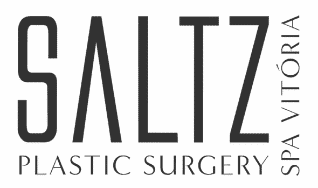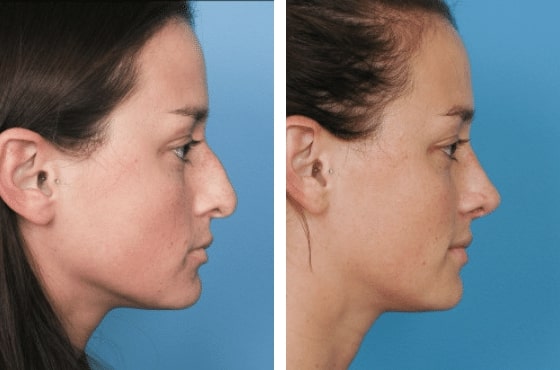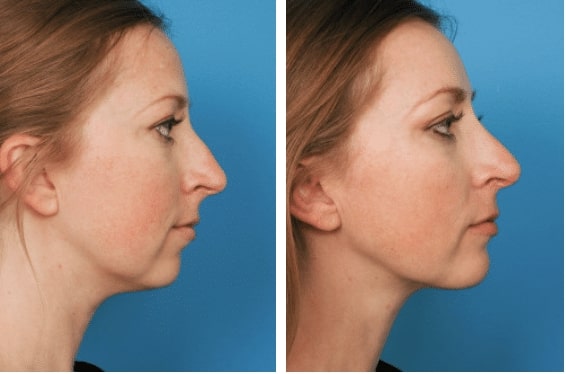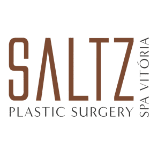Rhinoplasty
Some men and women opt to undergo rhinoplasty surgery because they're unhappy with their noses, while others choose to get a nose job to improve the function of the nose.
Luckily, at Saltz Plastic Surgery, board-certified plastic surgeon Dr. Renato Saltz leads a team of top-rated surgeons in Salt Lake City, UT, who are prepared to provide high-quality rhinoplasty procedures to patients looking to improve the appearance and function of their nose.
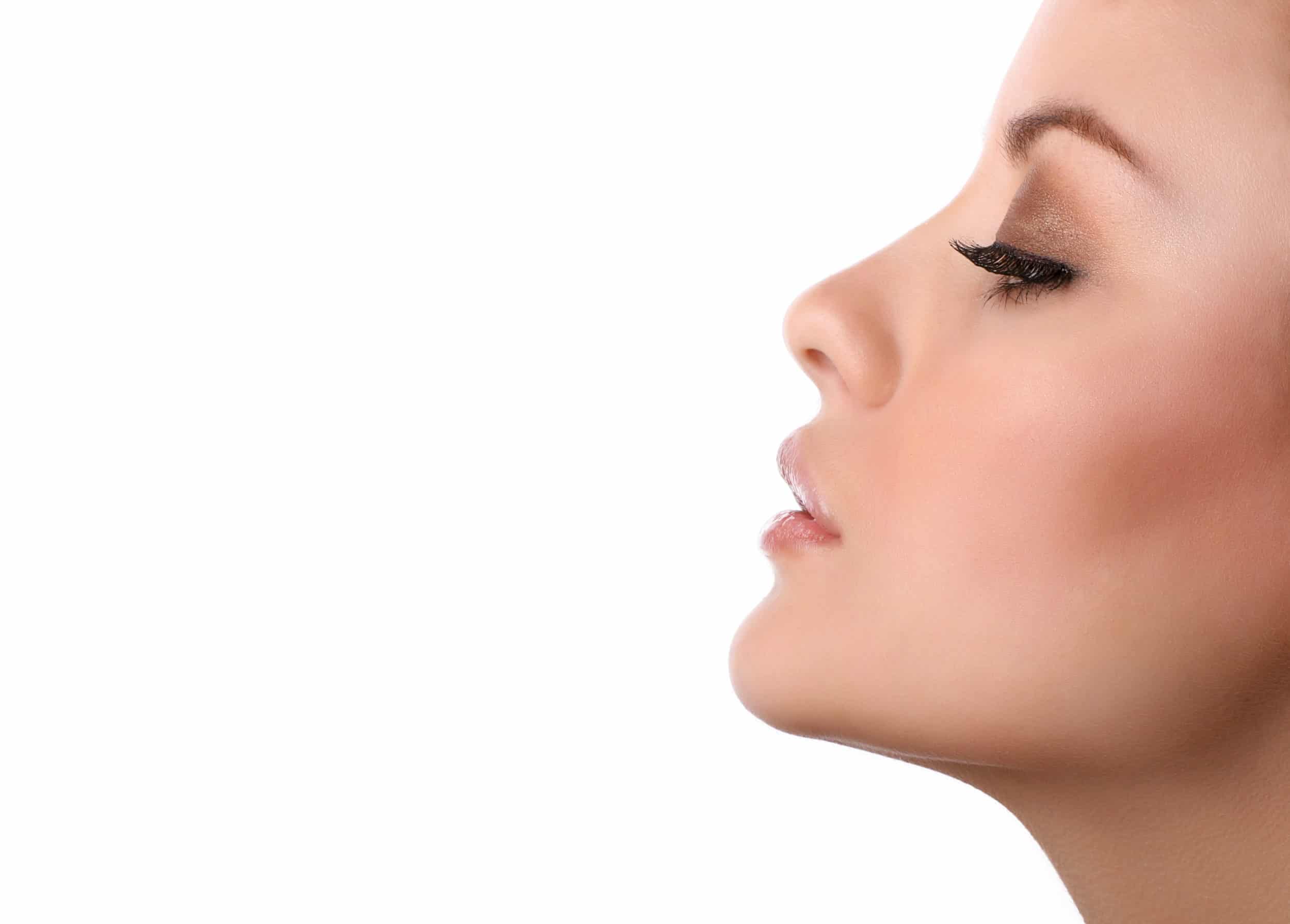
Rhinoplasty

Rhinoplasty


Rhinoplasty
What is Rhinoplasty?
Many of us don’t have the nose we’d like to have. Whether due to heredity or a former injury or trauma, it’s hard to look in the mirror every day and be unhappy with the look of your nose. Rhinoplasty, commonly known as nose reshaping or a nose job, is a cosmetic surgery that can reshape and improve the appearance of the nose. The end goal is a nose that blends in harmoniously with your other facial features. Our expert surgeons in Salt Lake City, UT. specialize in this procedure!

Rhinoplasty
What is Rhinoplasty?
Many of us don’t have the nose we’d like to have. Whether due to heredity or a former injury or trauma, it’s hard to look in the mirror every day and be unhappy with the look of your nose. Rhinoplasty, commonly known as nose reshaping or a nose job, is a cosmetic surgery that can reshape and improve the appearance of the nose. The end goal is a nose that blends in harmoniously with your other facial features. Our expert surgeons in Salt Lake City, UT. specialize in this procedure!

Rhinoplasty
What is Rhinoplasty?
Many of us don’t have the nose we’d like to have. Whether due to heredity or a former injury or trauma, it’s hard to look in the mirror every day and be unhappy with the look of your nose. Rhinoplasty, commonly known as nose reshaping or a nose job, is a cosmetic surgery that can reshape and improve the appearance of the nose. The end goal is a nose that blends in harmoniously with your other facial features. Our expert surgeons in Salt Lake City, UT. specialize in this procedure!
Rhinoplasty is a highly complex and delicate surgery that requires experience and expertise.
What Conditions can a Rhinoplasty Treat?
Rhinoplasty may be performed to correct a variety of cosmetic or functional problems. These include:
- Reduction of the nose to improve proportions with other facial features
- Correction of a bulbous tip of the nose
- Correction of a drooping or pinched tip of the nose
- Correction of a dorsal hump on the bridge of the nose
- Reduction of wide nostrils
- Adjustments that refine the relationship between the bridge and the base of the nose
- Saddlenose deformity
- Drooping or hanging columella
- Asymmetry
Who Is the Ideal Candidate for Rhinoplasty?
The best candidates for rhinoplasty are patients who want to change the appearance of their nose or improve their breathing. Ideal candidates should be in overall good health, non-smokers, and be able to maintain realistic expectations regarding the results of their rhinoplasty.
Patients who struggle with body dysmorphic disorder (BDD) or unrealistic expectations and obstructive sleep apnea will not be recommended for a rhinoplasty. Patients who suffer from bleeding disorders or other underlying health conditions that may increase complications during surgery will also not be suitable for this procedure.
Candidates for rhinoplasty typically experience the following:
- You're unhappy with facial symmetry
- You have breathing problems.
- You have a deformity that requires surgical correction.
- You've finished growing.
- You're a nonsmoker.
- You are overall physically healthy.
- You don't have a heart condition.
Is a Rhinoplasty Painful?
A patient is under general anesthetic during rhinoplasty and doesn't experience pain during the procedure.
Post-surgery, most report they feel uncomfortable due to the common side effects that patients will experience during recovery. Many compare the discomfort to what feels like a stuffy nose. Others describe the feeling as pressure around the forehead.
If you experience any complications during your recovery, contact Dr. Saltz as soon as possible.
Are There Any Risks with Rhinoplasty?
While rhinoplasty is a safe and effective procedure, like any other cosmetic surgery, it still comes with several risks that patients should be aware of. These risks include the following:
- Heavy bleeding
- Difficulty breathing
- Infection
- Poor reaction to anesthesia
- Numbness
- Necrosis
What Is the Success Rate of a Rhinoplasty?
Rhinoplasty procedures have an 85% to 90% success rate. With a board-certified plastic surgeon like Dr. Saltz leading your procedure, however, this success rate may be even higher. At Saltz Plastic Surgery, we work to ensure each patient is satisfied with the appearance of their nose.
What Are the Benefits of Rhinoplasty?
Having rhinoplasty can be one of the best decisions you make in your life. It is impossible to overlook the appearance of a nose that you just don't like. The rhinoplasty procedure can refine the shape and size of your nose to better "fit" amongst other facial features. By correcting the cosmetic concerns that plague you, your rhinoplasty procedure can bring about a host of positive emotional benefits. You may feel more like yourself than you ever have. You may confidence in your appearance that has never been present before. As you gain confidence and comfort with your new appearance, you may also experience benefits in your personal and professional relationships.
What Can I Expect During the Recovery Process?
Generally, rhinoplasty recovery is not nearly as long or uncomfortable as people expect. The vast majority of healing occurs in the two to three weeks after surgery. Initially, though, it may look as though symptoms like bruising and swelling are getting worse. These side effects usually peak two or three days into the recovery process. After that point, they gradually get better every day. To minimize your surgical side effects, it is important that you follow your post-op care instructions to a tee. Primarily, you should sleep with your head elevated and should avoid bending over for about two weeks. You can walk but must not engage in strenuous activities, and you'll need to take care not to accidentally bump your nose.
When Can I Expect to See the Full Results of My Rhinoplasty?
You'll be able to enjoy some difference in the appearance of your nose right away after surgery. However, bruising and swelling will obscure the full effect of your surgery for a few weeks. Usually, after two weeks of healing, patients are quite happy with their appearance. From that point, though, it can still take several more weeks for swelling to subside. Studies indicate that, after three months, approximately 90 percent of post-surgical swelling is gone. It can then take up to one year for the remaining 10 percent to subside.
Will I Be Able To Breathe out of My Nose Better After Surgery?
You may find that you breathe better after having rhinoplasty, once your swelling has resolved. It depends on the structures that have been modified. For example, breathing may improve noticeably if your rhinoplasty procedure involves straightening a deviated septum. The septum is a piece of cartilage that separates the nostrils. If the cartilage is crooked, leaning more to one side than the other, you may have difficulty breathing at times.
Myths and Misconceptions Regarding Rhinoplasty
“Rhinoplasty is a painful procedure.” This is false. With one of the easiest recoveries, rhinoplasty is NOT painful.
“A rhinoplasty will cause long-term breathing issues.” If performed correctly by a board-certified plastic surgeon, a rhinoplasty will not cause long-term breathing issues but rather improve them.
“A rhinoplasty is a simple procedure.” Nose reshaping requires complex, technical surgical work.
“Rhinoplasty will cause permanent scars.” A rhinoplasty won’t always cause scarring, but when it does, we are happy to recommend treatments to help fade scarring over time.
How Long Does a Nose Job Last?
Nose reshaping lasts a lifetime. As you age, your nose may gradually change, but most of the changes made are permanent.
What Is the Difference Between Rhinoplasty and a Nose Job?
Rhinoplasty, nose job, and nose shaping all refer to the same surgical procedure.
How Much Does an Open Rhinoplasty Cost in Salt Lake City, UT?
The average cost of a nose job in Utah is between $5000 and $8000. Most of the time, an open rhinoplasty is more expensive than a closed rhinoplasty.
Can I Finance My Rhinoplasty Surgery?
Our team is happy to work with you to find the best financing options available. To learn more, contact us today.
Will Insurance Cover My Nose Job?
Most rhinoplasty procedures are done solely for cosmetic improvements. Therefore, it is rare for insurance to cover any of the major costs associated with the procedure. Functional rhinoplasty, on the other hand, which can be proven necessary for medical reasons, may receive partial coverage for some of the costs of surgery. If your plastic surgeon determines that your rhinoplasty procedure could correct a functional, structural problem, you may then talk directly to your insurance company to find out what would be required to receive medical clearance for this procedure.
Schedule a Consultation for a Rhinoplasty in Salt Lake City, UT Today
At Saltz Plastic Surgery, Dr. Renato Saltz provides a comprehensive consultation to help you decide if rhinoplasty is for you. He offers expertise, compassion, and understanding to achieve the best outcome for your rhinoplasty procedure.
To learn more information about our rhinoplasty procedure in Salt Lake City & Park City, click here or call us at 435.655.6612 or 801.274.9500 to schedule your consultation.
Ready To Get Started?
We combine preoperative treatment, surgery, and postoperative care for a comprehensive, holistic treatment for all patients. Call today for more information about Rhinoplasty in Salt Lake City & Park City or to schedule your consultation 435.655.6612 or 801.274.9500.

